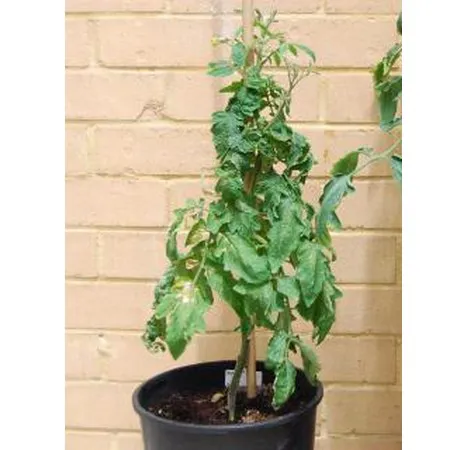The Department of Primary Industries and Regional Development (DPIRD) is working with horticulture growers to contain the spread of the serious disease Potato spindle tuber viroid (PSTVd), following confirmation of two recent detections.
PSTVd was confirmed in samples from tomato and capsicum crops from two properties just north of Perth. DPIRD is undertaking delimiting surveillance to determine if the disease is present in production areas.
Growers have been asked to support DPIRD’s surveys by monitoring their crops and reporting both the absence of signs of the disease or any suspect symptoms to the department. The department is working closely with vegetablesWA and the Potato Growers Association of Western Australia to assist growers to implement meticulous on-farm hygiene measures to limit the risk of disease spread.
PSTVd, which can cause production and quality losses, has been periodically detected in Carnarvon in field grown crops of tomato, capsicum and chilli since 2007. It has never been detected in potato growing areas of the State.

DPIRD Chief Plant Biosecurity Officer Sonya Broughton said adopting high quality hygiene practices and regular monitoring would help limit the disease. Dr. Broughton said it was important to report observations to DPIRD to make a correct diagnosis, as symptoms could easily be confused with nutrient deficiency or toxicity, spray damage, insect damage or plant viruses.
“Symptoms usually become apparent when the plant is about eight to 16 weeks of age, depending on the crop and environmental conditions,” she said. “In mature tomato plants severe infection can cause leaflet curling, twisting and stunting, as well as purple and yellowing of the leaves and a bunching effect.
“Capsicum and chilli PSTVd symptoms are more subtle, such as slight leaf distortion and wavy edges. With potatoes, infected tubers may be small, elongated and cracked, while the eyes can be more pronounced and the leaf size may also be reduced and stems more upright, longer and slender between leaves.”
PSTVd is transmitted through small wounds in the leaf surface, caused by contact between healthy and diseased plant sap. There are currently no registered control treatments for PSTVd, highlighting the importance of strict on-farm hygiene measures to prevent disease spread.
The DPIRD website has detailed information on disease symptoms, on-farm hygiene measures and monitoring and reporting measures.
For more information about PSTVd symptoms, monitoring and control measures click here.
